|

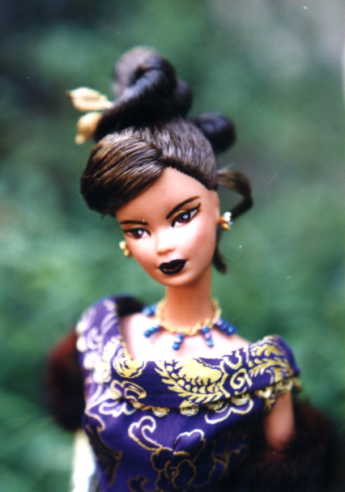
After many hours of hard work, it's a joy to
sit back and enjoy your creation and to share it with others.
Whether your doll is for a buyer, swap, a contest or just
for yourself, it's important that your photographs adequately
reflect her beauty. Even the most beautiful doll can look very
shabby in poor photographs, and a simple doll can be made to look
exceptional with the right photograph. Many of us do not have the
time or money to have all our dolls professionally photographed.
This article is intended to teach the basics of photography and
to provide suggestions to help you take your own fabulous doll
portraits.
CHOOSING A CAMERA
In general, most people tend to use 35mm
cameras (either a standard 35mm camera or an automatic focus
point-and-shoot type), or digital cameras. For my own
photographs, I use the plainest 35mm camera with completely
manual focus and aperture and light adjustments. Point and shoot
cameras usually do not allow you to control your point of focus,
nor to control the lighting. I have found it difficult to take
close-ups with this kind of camera, and have also found that the
flash tends to wash out facial features and some colors. However,
many nicer 35mm cameras do have manual settings as well as the
ability to add on special lenses.
CHOOSING A FILM
In general, the faster the film, the grainier
the emulsion on the film itself. 100 film gives wonderful detail,
but requires a lot of light because it does not expose as
quickly. 800 film is very fast, but is quite grainy and gives a
poor quality photograph. If you have a lot of light, 200 film is
ideal. For most home photography purposes, 400 film is the best,
as it is the most versatile.
PHOTOGRAPHY 101
First let me introduce you to the basics of a
camera. As you know, light (your image) travels through a hole
called the aperture, through the lens and onto the film.

Other than focus, you can also control the size
of the aperture as well as the shutter speed, which is how long
the aperture stays open to allow light through. When more light
hits the film, you get a brighter picture. So, you can either make
your aperture bigger or your shutter speed longer to let in more
light. Likewise, less light gives you a darker picture. Most
cameras contain a built-in light meter that lets you know you're
in good range for proper exposure.
Let's get started. Look at the lens part of
your camera. There are a lot of layers of numbers there! Look for
the row of numbers that includes 22-16-11-8-5.6-4-2.82.
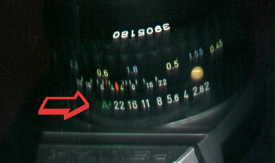
These are the aperture settings. Ok, this is
confusing, but those numbers actually represent fractions so the
SMALLER number means a BIGGER aperture, so 2.82 lets in the most
light, and 22 the least. That number is called the F-stop. The
other layers of numbers usually have to do with your range of
focus. Don't worry about those, because when photographing dolls,
you're always within a foot or two of the doll.
Now look for a set of numbers on your camera
like 8-15-30-60-125-250. They are usually on a knob like this.

This is your shutter speed. The standard is 60,
so that's a good place to start. If your light is very low, you
may use a slower shutter speed (smaller number in this case), but
you will need a tripod because any camera movement will make your
picture fuzzy. If you are in the sun or at the beach, where it is
extremely bright, you may need a faster shutter speed.
The other thing I need to mention is range of
focus. Have you ever noticed, when you squint, or look through a
pinhole in paper, that you can focus farther. That's because a
smaller aperture gives you a longer range of focus. Likewise, the
range of focus through a large aperture is very shallow.
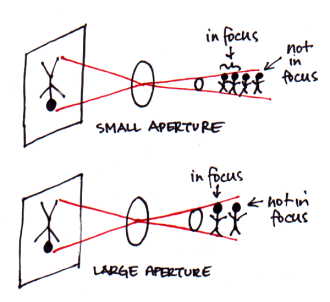
This is important to keep in mind for two
reasons. You can often photograph in fairly low light without a
flash with an F-stop setting of 5.6 or less, but you need to be
more precise with your focusing. A tripod can help here too.
Also, if you have a lot of light and likewise a small aperture,
your background will likely also be in focus. However, you can
get an interesting fuzzy background if you keep your aperture
wide (low F-stop number), and you may have to increase your
shutter speed so you won't overexpose the film.
First, set your shutter speed at 60. Look
through the viewer or wherever your light meter is, and turn the
F-stop dial. You'll see the marker move in and out of the range.
If you notice, you get the same effect by keeping your aperture
the same and playing with the shutter speed. Whenever the marker
is in the right range, you're ready to go.
There are three basic elements to a photograph
that you need to keep in mind when taking your doll's picture.
1) subject
2) background
3) lighting
SUBJECT
Ok, this seems self explanatory, because your
subject is your doll. But before you start clicking away, decide
whether you want whole body shots, close-ups, or torso.
Experiment with different poses before you begin. For instance,
try taking a picture of your doll from behind, looking over her
shoulder. If you are taking a close-up, make sure the camera will
focus on an object that close (within 6 inches or so). Most
point-and-shoot cameras will not, although many digital cameras
will. With most cameras, your close-up will include the torso as
well. If you want to get closer, you will need special lenses.
Don't fret! There is no need to invest hundreds of dollars on an
elaborate lens. For most cameras with removable lenses (Did you
know your lens was removable?), you can purchase attachments
called close-up filters, which are essentially just magnifying
glasses for your camera. They usually come in a set of 3, for
about $35.00. The typical set gives you +1, +2, and +4 degrees of
magnification.
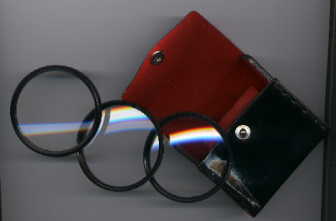
The attchments or filters simply screw on and can be used alone or
combined for varying degrees of magnification. In fact, with all
three at the same time, you can get as close as just one eye!
Keep in mind that to magnify, these filters are convex pieces of
glass, so no matter what your F-stop, they give you a very short
range of focus. That means it may be more difficult to focus. But
it also means you can get interesting effects, because other
parts of your doll as well as the periphery of the photo will be
out of focus.
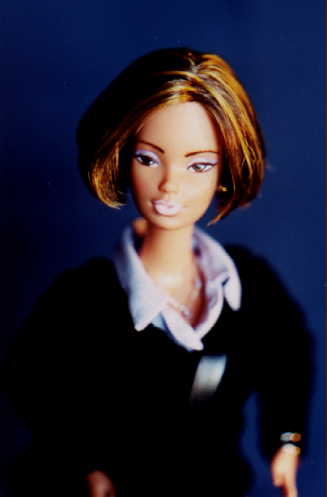
Page 2




Barbie® is a registered trademark of Mattel®,
Inc. Gene® is a registered trademark of Mel Odom and Ashton Drake.
Candi® is a registered trademark of Hamilton Designs. Tyler Wentworth®
is a registered trademark of the Robert Tonner Doll Company. Any other
dolls mentioned are registered trademarks of their respective owners. This
website and those who maintain it are in no way affiliated with the any
above mentioned parties. The images of the dolls displayed are photos taken
by the author(s) of the article and/or the designer featured. Please do
not remove pictures and/or text from this website without permission of
the webmaster and/or the photographer.
|